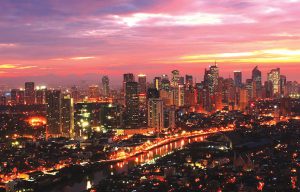BLOOMBERG
Philippines’ core inflation bolted to the fastest pace in 24 years, a print that will likely convince policymakers to retain their tightening bias even as the headline measure slowed.
The core gauge, which strips volatile food and energy costs, rose 7.8% in February from a year ago, quickening from 7.4% the prior month and clocking in the fastest increase since March 1999, according to the Philippine Statistics Authority.
Headline inflation last month was 8.6% year-on-year, a tad slower from 8.7% in January which was the most since 2008 and against a median estimate of 8.9%, the statistics agency said. That’s the first slowdown in the overall print since August. Compared to the previous month, price growth was unchanged.
Bangko Sentral ng Pilipinas (BSP), which has overseen the nation’s most-aggressive tightening in two decades since May 2022, said it “remains prepared to adjust its monetary policy settings as necessary to prevent inflation expectations from becoming disanchored and safeguard the inflation target over the policy horizon.â€
“Core inflation continues to accelerate. This just showcases how broad-based inflation has become and second order effects are now pervasive,†said Nicholas Mapa, an economist at ING Groep NV in Manila. “This is what happens when inflation remains elevated for so long, it devolves into a situation where inflation begets inflation. Thus, our call that inflation will be sticky in 2023.â€
Transport was the sole driver of the headline inflation downtrend in February, posting a 9% rise from 11.1% the previous month, the statistics agency said.
“There are still other challenges particularly core inflation,†said the nation’s chief statistician Dennis Mapa. “Prices of low volatility items are a bit sticky and continuously increasing, and this would basically put some challenges to our numbers in March,†he said.
BSP sees inflation staying above the 2%-4% target until early fourth quarter. The latest view is still largely in line with what Governor Felipe Medalla said that price gains should decelerate to 4% by November or December. Elevated inflation in the Philippines contrasts trends in other Southeast Asian nations including Malaysia and Indonesia, where easing prices allowed a pause in monetary tightening.
 The Gulf Time Newspaper One of the finest business newspapers in the UAE brought to you by our professional writers and editors.
The Gulf Time Newspaper One of the finest business newspapers in the UAE brought to you by our professional writers and editors.
